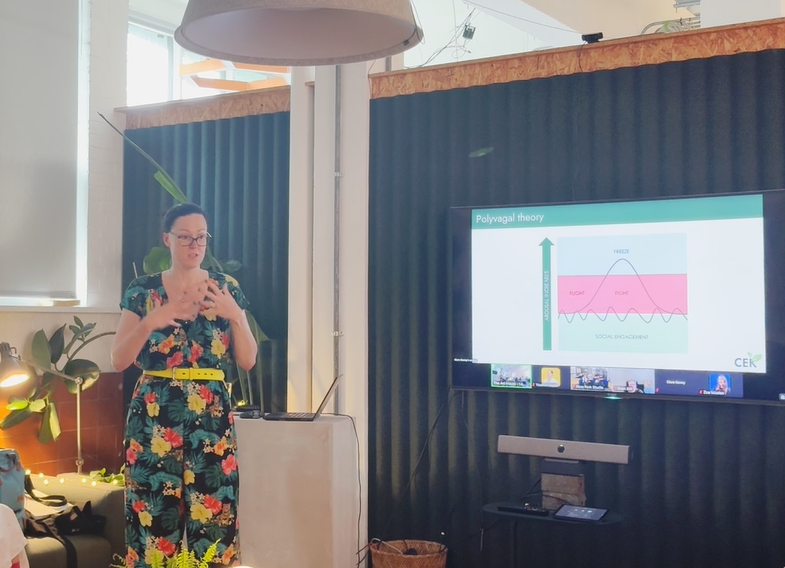5 ways to build a neuro-inclusive culture at work
- Clare Kenny
- May 7
- 3 min read
It’s not about labels, it’s about people!
We all want to work in environments where we feel understood, valued, and able to thrive. For neurodivergent individuals, that can often feel like a tall order. Not because their strengths are any less valuable, but because many workplace norms aren’t designed with different ways of thinking in mind.
But it doesn’t have to be that way. Neuro-inclusion isn’t about perfection or having all the answers. It’s about creating cultures rooted in curiosity, psychological safety, and a willingness to adapt.
Here are five practical ways to build a more neuro-inclusive culture, and why it benefits everyone.
Ditch assumptions. Embrace curiosity.
Our brains are wired to make snap judgements. Within seconds of meeting someone, we form opinions, then unconsciously seek out information that confirms them. It’s a natural way of thinking, how we make sense of the world. But left unchecked, this bias narrows our perspective and limits our ability to connect.
For example, if someone is quiet in a meeting, we might assume they’re disengaged. But what if they’re processing, overstimulated, or simply communicate differently?
The antidote to assumption is curiosity. Instead of jumping to conclusions, ask yourself: What might this person need to be at their best?
A simple shift in mindset can open up dialogue, challenge our own thinking, and help us connect in more inclusive, human ways.
Prioritise psychological safety.
Innovation depends on difference, and difference requires safety. When people feel safe to speak up without fear of judgement, they’re more likely to challenge ideas, share alternative perspectives, and bring forward new solutions.
Psychological safety is especially important for neurodivergent colleagues, who may have felt silenced, misunderstood, or penalised in the past for thinking differently.
Build it by making space for diverse voices, modelling vulnerability as a leader, and showing that it’s okay not to have all the answers. One of the simplest, most powerful questions you can ask is: “What would help you feel more comfortable here?”
No one knows better what they need than the individual themselves.
Design with inclusivity in mind.
When we design with accessibility at the centre, everyone benefits. A ramp may be built with wheelchair users in mind, but it also helps anyone with a pram, suitcase, or injury.
The same principle applies in the workplace.
Neuro-inclusive practices might include:
Offering information in multiple formats, such as written recaps, voice notes, or visuals
Giving people time to reflect and respond, not relying solely on who speaks up first
Removing ambiguity in communication by avoiding jargon and being clear and direct
Checking in on comfort, whether that’s lighting, noise levels, or ways of working
These small shifts reduce cognitive load and help all team members perform at their best, not just those who are neurodivergent.
Break the bias loop.
Homogeneous teams often fall into echo chambers, where similar ways of thinking reinforce blind spots. We see this in hiring decisions, meeting dynamics, and even our social media feeds. Algorithms and affinity bias filter out difference and reinforce what we already believe.
When you’re surrounded by people who think like you, you limit innovation and risk missing critical insight.
To interrupt the loop:
Pause and reflect: “Why do I think this? What evidence do I have?”
Seek different perspectives: Read, listen to, and engage with people outside your usual circles
Challenge your certainty: When you feel sure about something, explore opposing views
Difference isn’t a threat. It’s the birthplace of better thinking, stronger teams, and more inclusive cultures.
Make storytelling part of your culture.
People don’t connect with policies. They connect with stories. Sharing lived experience makes abstract issues real, builds empathy, and chips away at stigma.
Whether it’s neurodiversity, mental health, or any topic that carries shame or silence, storytelling is one of the most powerful tools we have.
Leaders don’t need to share everything, just enough to be real. A moment of honesty can create a ripple effect, showing others that it’s safe to be human.
Consider:
Featuring employee stories in internal campaigns
Creating spaces for peer storytelling and support networks
Using podcasts or videos to spotlight lived experiences
Inclusion starts with understanding. Understanding starts with listening.
You don’t need to be a neurodiversity expert to lead inclusively.
You just need to be open, curious, and willing to adapt. Ask the questions. Listen to the answers. Make space for difference.
When we build cultures where everyone can thrive, we all win.




Comments